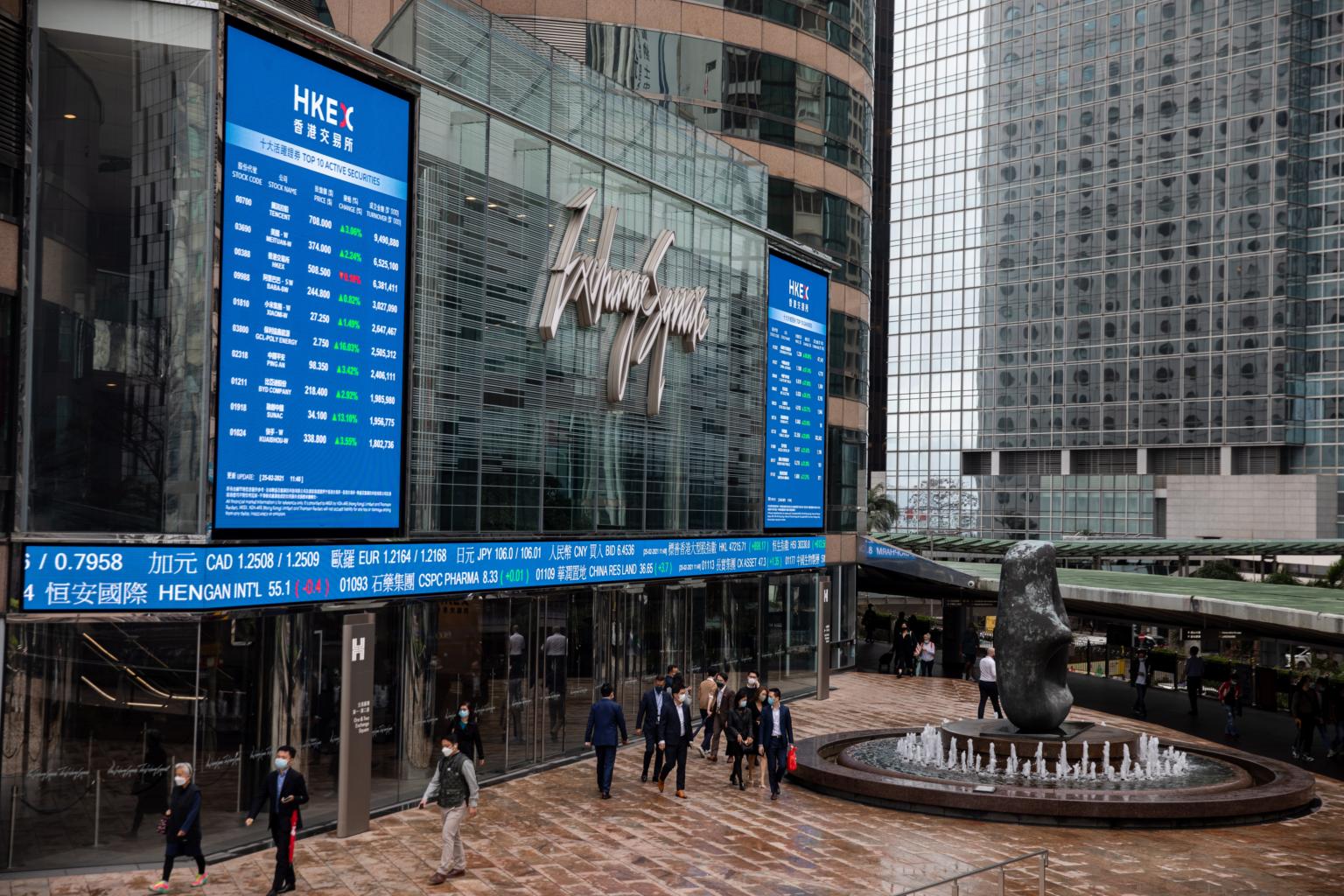Hang Seng adopts sweeping changes to Hong Kong stock gauge
Sign up now: Get ST's newsletters delivered to your inbox

Launched in 1969, the Hang Seng Index started out with 33 constituents.
PHOTO: EPA-EFE
Follow topic:
HONG KONG (BLOOMBERG) - Hang Seng Indexes plans what will be one of the biggest revamps to Hong Kong's 51-year-old stock benchmark, a move that will affect tens of billions of dollars in funds tracking it.
The wide-ranging overhauls to the Hang Seng Index (HSI) include increasing the number of constituents to 80 companies from 52 and limiting a stock's weighting to 8 per cent, the firm said in a statement on Monday (March 1). Implementation of the changes will begin as early as its May index review and go through mid-2022.
The HSI, which in 2020 lagged global peers by the most in decades, has been moving away from being filled with financial and property stocks in recent years at a time when China's tech giants hold growing sway. In 2019, the information technology sector overtook financials as the index's largest industry by market value, according to a December consultation paper detailing proposed changes to the benchmark.
The changes include reducing the 10 per cent maximum weighting a company could have in the HSI. The new limit will be 8 per cent and apply to all members, and will also be applied to the Hang Seng China Enterprises Index, effective from the index rebalancing in June. The benchmark currently caps secondary listings or shares with unequal voting rights at 5 per cent.
The announcement follows a record buying frenzy from mainland traders that sent the stock gauge past the 30,000 point level in January for the first time since May 2019, led by heavyweights like Tencent Holdings and bourse operator Hong Kong Exchanges & Clearing.
The Asian financial hub has become a preferred venue the past several years for a wave of Chinese megacaps to sell shares. Kuaishou Technology, backed by Tencent, surged 161 per cent on its debut last month in the world's biggest internet initial public offering since Uber Technologies. The HSI revamp will also shorten the listing history requirement to three months for new companies effective May.
In addition, Hang Seng Indexes will ensure 20 to 25 of constituents in the benchmark are classified as Hong Kong firms, a number that will be evaluated every two years. The proportion of mainland companies in the index by market value was 79 per cent in 2020, it said in December's paper.
On Friday, the company said it would add Alibaba Health Information Technology, Haidilao International Holding and Longfor Group Holdings, expanding the benchmark to 55 members from 52 effective March 15.
Key Changes:
• Target to reach 80 constituents by mid-2022, aim to ultimately fix at 100 constituents. Currently, there are 52 members, to be expanded to 55 by March 15
• Shorten the listing history requirement to three months, effective from the May 2021 index review. Now, there is a minimum of three-month listing based on market value rank
• Apply 8 per cent weighting cap on all constituents, effective from June 2021. Currently, it is 10 per cent for single stock and 5 per cent for secondary-listed constituents
• Expand sector representation with constituents selection by seven industry groups, effective from May 2021 index review. Among 12 industries now, telecoms, financials and IT covered 80 per cent in terms of market capitalization as of December 2020
• Maintain 20 to 25 constituents that are classified as Hong Kong firms, with number to be evaluated every two years. The weighting of Hong Kong firms in HSI fell to 42.2 per cent in Dec 2020 from 45.3 per cent at end-2016
• Target to reach 80 constituents by mid-2022, aim to ultimately fix at 100 constituents. Currently, there are 52 members, to be expanded to 55 by March 15
• Shorten the listing history requirement to three months, effective from the May 2021 index review. Now, there is a minimum of three-month listing based on market value rank
• Apply 8 per cent weighting cap on all constituents, effective from June 2021. Currently, it is 10 per cent for single stock and 5 per cent for secondary-listed constituents
• Expand sector representation with constituents selection by seven industry groups, effective from May 2021 index review. Among 12 industries now, telecoms, financials and IT covered 80 per cent in terms of market capitalization as of December 2020
• Maintain 20 to 25 constituents that are classified as Hong Kong firms, with number to be evaluated every two years. The weighting of Hong Kong firms in HSI fell to 42.2 per cent in Dec 2020 from 45.3 per cent at end-2016

